Serene Borimsa Temple
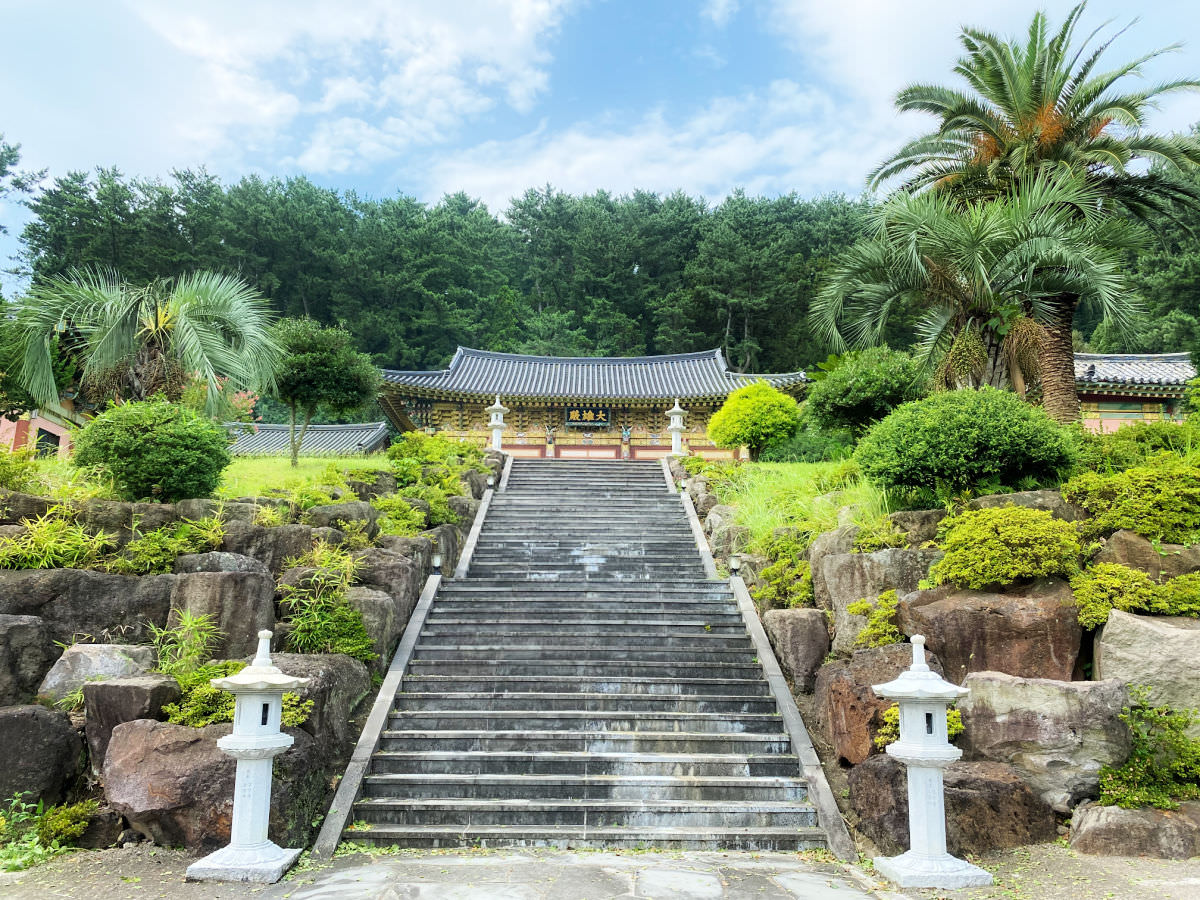 Steps are very symbolic to Buddhism religion comparable to attaining enlightenment in one life's journey
Steps are very symbolic to Buddhism religion comparable to attaining enlightenment in one life's journeyIntroduction
Borimsa Temple is one of the historic temples on Jejo Island's self-governing province. Visitors can also explore the many gardens and walkways surrounding the temple grounds. The Borimsa Temple is a great destination for anyone who wants to learn more about Jeju Island's cultural heritage.
Planning a visit to the Borimsa Temple? Make sure to bring comfortable shoes, as some of the paths can be somewhat rocky and uneven.
Also, there are no facilities on-site, so make sure to bring along snacks and water. Finally, make sure to dress appropriately; the temple is a sacred site and it's important to be respectful of its sanctity. With a little preparation, you can have an enjoyable visit to the Borimsa Temple!
Once you're onsite, take some time to explore the temple complex. The complex is home to several statues and shrines dedicated to various gods and goddesses. There are also two main halls inside the temple grounds—the Main Hall and the Soul Hall—where visitors can pay their respects to local deities.
Make sure to take a few moments to appreciate the intricate carvings and sculptures throughout the complex. As you do so, make sure to take plenty of pictures; these are memories that will last a lifetime!
After exploring the temple grounds, it's time for some relaxation. Take some time to sit down and admire the beautiful landscapes surrounding the Borimsa Temple.
The views of the nearby hills, valleys, and rivers are simply stunning. You may even want to take a dip in the local lake or river while you're here!
Finally, don't forget to pick up some souvenirs at the gift shop before leaving. From traditional paintings, sculptures, and masks to local snacks and drinks—you'll be able to find a unique gift for everyone back home.
Once you're done exploring the temple and its surroundings, it's time to head out and explore more of South Korea's Jeju Island!
Borimsa Temple
Borimsa Temple [보림사] quietly nestles by the foothills of the popular Sarabong (Peak) on Jeju Island, South Korea. It was not in my plan, and did not even know that there is such a small temple area near the 'sunset' peak.
I was excited as always every time I see a temple area for some reason. As I don't want to deal with it in this article, one of the reasons is that it feels peaceful and serene.
It is the same atmosphere and feeling when I see other religious and worship places, including cathedrals, mosques, other temples, and similar sites. I could be wrong, but I guess most people feel the same as I do, even the non-believers.
Okay, going back to Borimsa Temple...
Since I don't know much about this temple, I can only base my contents here from the site or information board erected right before the steps located across the main temple.
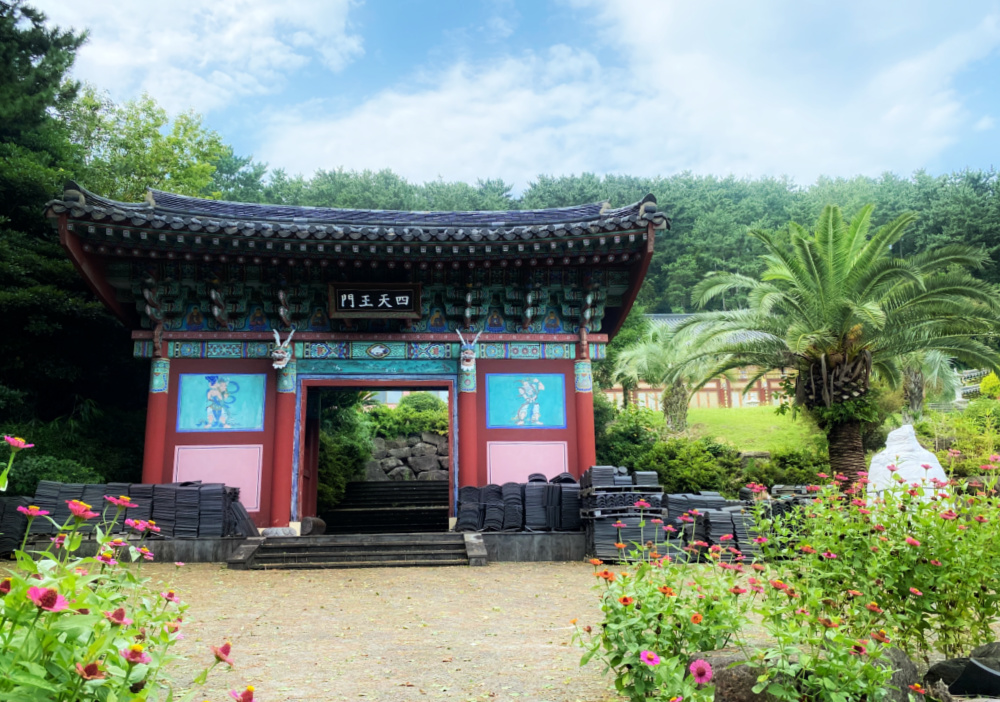 Entrance gate to the temple area [보림사]
Entrance gate to the temple area [보림사]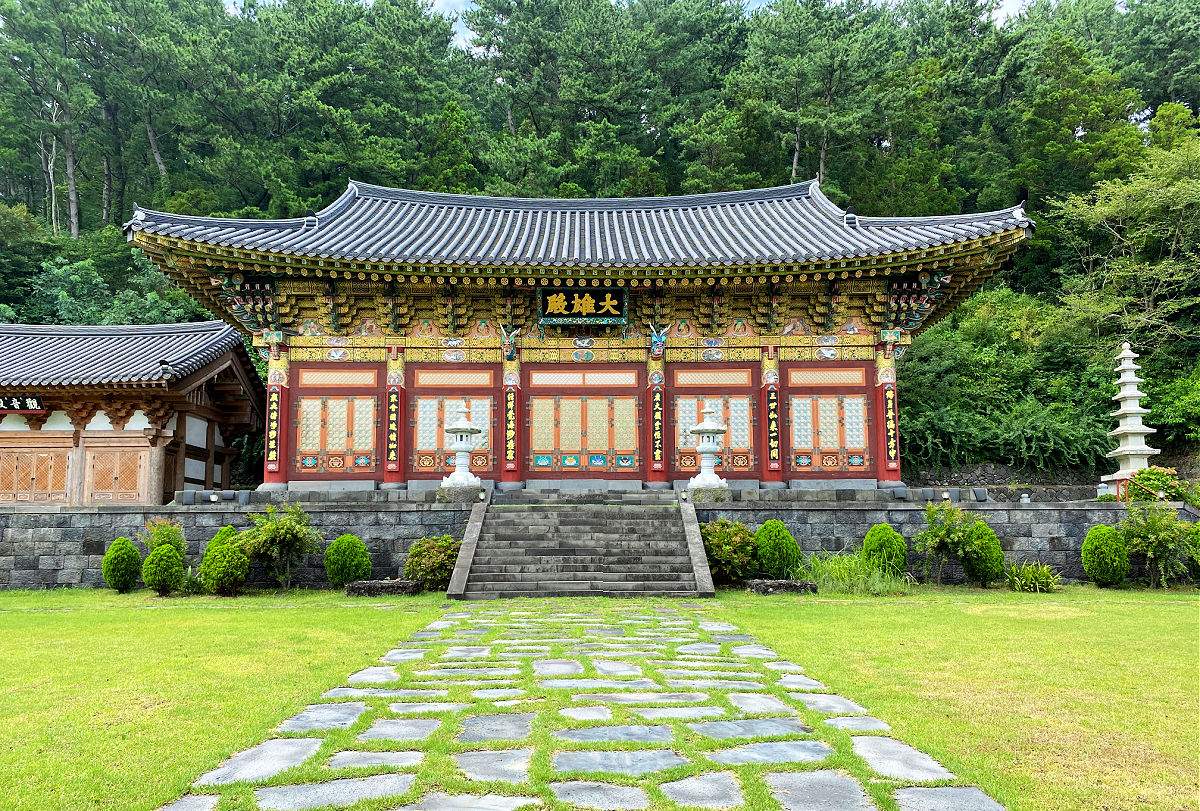 Daeungjeon [Main Temple]
Daeungjeon [Main Temple]![Borimsa Temple [보림사 제주도] borimsa-temple](https://www.koreattrack.com/images/borimsa-temple-view.jpg) Jeju Island Borimsa
Jeju Island BorimsaWooden Figure: A Cultural Heritage
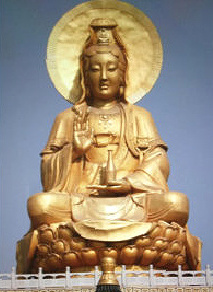
Etched and painted on the metal board, it is said that there is a wooden figure of a Guanyin Bodhisattva.
The bodhisattva measures 86mm in total height. The Guanyin is in a seated position, lacquered and gilded.
Shown on the left is a photo of Guanyin in China before it was demolished.
The bodhisattva was brought to Borimsa Temple when built in 1957 from Seonamsa Temple in Suncheon, Jeollanam-do (South Jeolla Province).
The bodhisattva, who is in a lotus position, wears a sumptuously-decorated crown on her head.
"With the head slightly inclined forward, the hair gathered behind the ears flows down over the shoulders in two strands. The thumb and the middle finger of the left hand touch each other, and the right-hand rests on the lap, holding a kundika."
(A 'kundika' is an ewer used in rituals).
The bodhisattva is clothed like a Buddha with her silk robe covers both shoulders. "The robe, as it flows downward, hides the toes of the left foot, and drapes down below both legs, forming multiple folds."
WHAT'S A GUANYIN?: A Guanyin is a Buddhist bodhisattva highly worship for its compassion. Its name is equivalent to Avalokitesvara Bodhisattva. Guanyin was the name given to the Goddess of Mercy or the Mercy Goddess by Jesuit missionaries in China. Wikipedia
 A Guanyin Bodhisattva with no 'kundika'
A Guanyin Bodhisattva with no 'kundika'I have searched Guanyin photos online and found that they mostly don't have the kundika (see the photo), a common bodhisattva's ritual ewer. But the figurine in Borimsa has it.
According to the information, the figurine of Amitabha,
usually found on a Guanyin's crown, is missing (broken off). This late
Joseon period statue has a large head compared to its body and with a
thick garment.
It is believed that a sculptor monk, Saeknan,
a famous figure of Buddhist sculpture active between the late 17th and
the early 18th century, was the creator of this Guanyin Bodhisattva.
I
have not seen it as the temple was closed due, most probably, to the
Coronavirus problem that was still around during my visit. I really hope
to see it next time.
I have searched Guanyin photos online and found that they mostly don't have the kundika (see the photo above), a common bodhisattva's ritual ewer. But this figurine has it.
According to the information, the figurine of Amitabha, usually found on a Guanyin's crown, is missing (broken off). This late Joseon period statue has a large head compared to its body and with a thick garment.
It is believed that a sculptor monk, Saeknan, a famous figure of Buddhist sculpture active between the late 17th and the early 18th century, was the creator of this Guanyin Bodhisattva.
I have not seen it as the temple was closed due, most probably, to the Coronavirus problem that was still around during my visit. I really hope to see it next time.
 Borimsa Temple's ground and buildings with Sarabong as the backdrop
Borimsa Temple's ground and buildings with Sarabong as the backdropJeju Special Self-Governing Province made Guanyin Bodhisattva statue a Tangible Cultural Heritage (number 18) under the care of Borimsa Temple.
Verdict? It is certainly worth a visit and as part of your exploration in the area where you can find Jeju National Museum.
After my quick visit and photography session of Borimsa, I proceeded to Sarabong Peak Park, which stands some meters away. It showcases interesting rock formations and a peak that overlooks the coastline of Jeju Island. The park is also home to numerous species of diverse wildlife, including migratory birds such as cormorants, whooper swans, mallards, and more. It’s definitely worth checking out!
To conclude my exploration of Borimsa Temple and its surroundings, I ventured to nearby Seongsan Ilchulbong Peak. This ancient volcano crater is designated as a UNESCO World Heritage Site and offers stunning views of the surrounding Jeju Island landscape. It’s definitely an experience worthy of visiting!
Overall, Borimsa Temple stands out with its rich history and cultural significance. Whether you’re looking for a spiritual experience or breathtaking views of the local landscape, Borimsa Temple is certainly worth a visit!
I would also highly recommend making time to explore Sarabong Peak Park and Seongsan Ilchulbong Peak during your visit. Not only do they provide opportunities for spiritual reflection, but they are also a great way to immerse yourself in the natural beauty of Jeju Island.
Visiting Borimsa Temple and its surrounding sites has been an incredible experience for me personally and I definitely recommend it to anyone looking to explore the area!
A journey through this part of Jeju Island will leave you with a lasting impression. From the breathtaking views of the local landscape to the rich cultural heritage of Borimsa Temple, there is something here for everyone to enjoy.
The region is full of interesting sites, such as Cheonjeyeon Waterfall and Manjanggul Cave. These areas are great places to take a break and appreciate the natural beauty of Jeju Island.
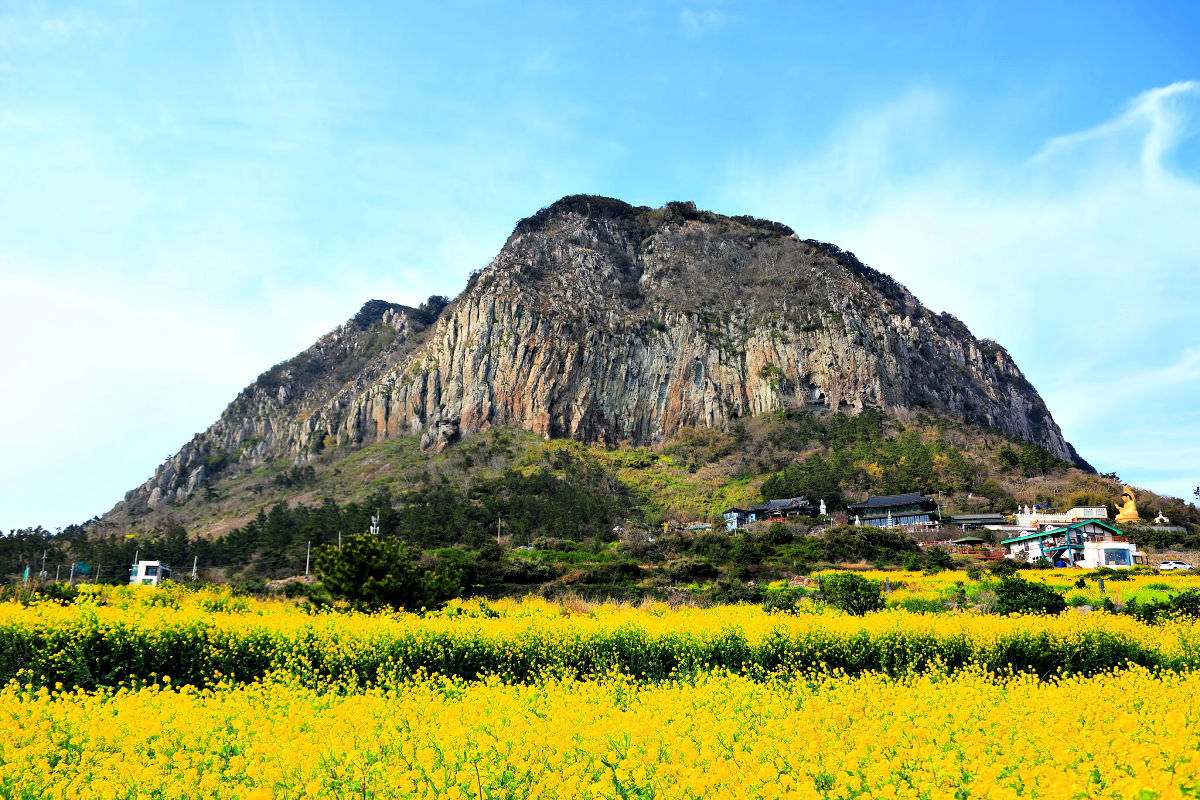 Jeju-do Ilchulbong's side view.
Jeju-do Ilchulbong's side view.If you're looking to venture further out, there are plenty of activities and tours available in the area.
Whether it's going on a boat ride around Seongsan Ilchulbong Peak or visiting Udo Island for an unforgettable snorkeling experience, you're sure to have a memorable time exploring Jeju Island.
You can even take part in the many festivals held throughout the year, such as the Seongsan Sunrise Festival and Oedolgae Rock Festival. Participating in these events will give you a glimpse into the local culture and provide plenty of opportunities for fun and adventure.
No matter what type of experience you're looking for, Jeju Island has for everyone. From its stunning natural beauty to unique cultural festivals and attractions, you won't be disappointed by all that Jeju Island has to offer.
Whether it's a romantic getaway or a family vacation, Jeju Island will leave lasting memories with each and every visitor. So what are you waiting for? Come explore Jeju Island today!
Thanks for reading.
- Home
- Temples in South Korea
- Borimsa Temple
Get Exciting Activities
Book one of our exciting activities today to experience the thrill of a lifetime! Take advantage of this opportunity and secure your spot in advance.
Hotel Map Guide
Find your affordable, accessible, and comfortable hotel in Seoul at Agoda.Com. See the hotel map below...
Hotel Booking Guide
Find affordable and amazing hotels on Agoda.com using the search box below. Book now to enjoy great discounts and save!


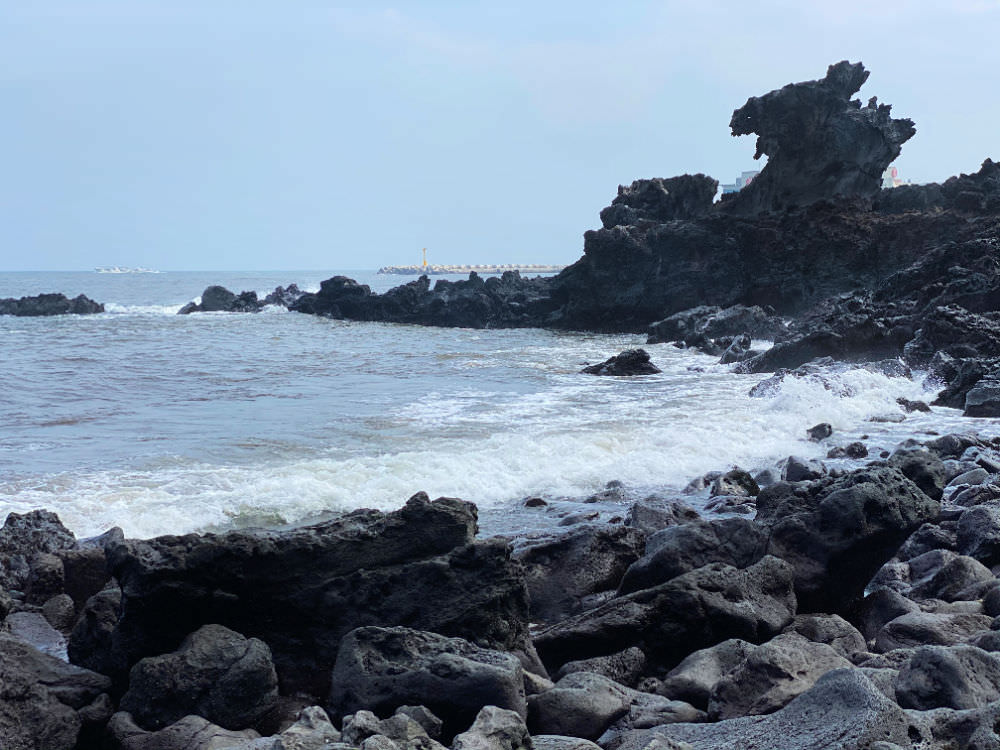




New! Comments
What do you think about this page? Leave me a comment in the box below.